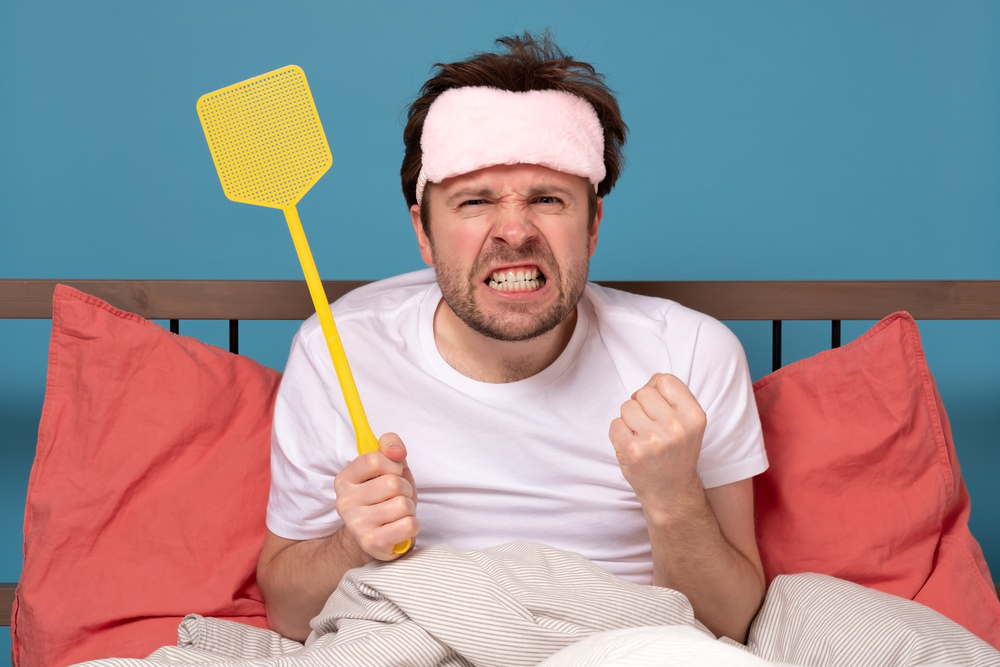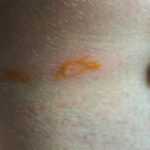Top Methods for How to Kill Bed Bugs Effectively
Tired of battling bed bugs? Here’s how to kill bed bugs quickly and effectively. We’ll cover practical steps to identify, contain, and eliminate these pests using methods like heat treatments, steam, and chemicals.
- Identifying bed bug infestations early is crucial; use tools like flashlights and interceptor traps to monitor and assess severity.
- Contain the infestation by sealing infested items and vacuuming thoroughly, which helps prevent spreading before treatment.
- Consider professional pest control services for severe infestations, as they offer advanced treatments and ensure comprehensive elimination of bed bugs.
Identify Bed Bug Infestations
Identifying the infestation is the first step in tackling a bed bug problem. Bed bugs are small, but not invisible; adult bed bugs are approximately 5 millimeters across, making them easier to spot if you know where to look. A flashlight and magnifying glass help inspect common hiding places for bed bugs. Bed frames, box springs, and mattresses are common hiding spots since bed bugs stay close to their food source—you!
To catch these elusive critters, use bed bug interceptor traps under furniture legs. These traps are incredibly effective at monitoring and catching bed bugs. Bed bug interceptors under each leg of the bed make it easier to spot survivors and assess the severity of the infestation. This provides a clear indication of the number of bed bugs and their concentration areas.
Don’t forget to examine upholstered furniture and other areas where bed bugs hide. Thoroughly inspect any suspected infested room to ensure you identify all the bugs.
Regular checks help catch smaller infestations before they escalate.
Contain the Infestation
After identifying the bed bug infestation, the next step is to contain it. This prevents the bed bugs from spreading to other areas of your home. Start by placing infested items in sealed plastic bags to prevent the bugs from escaping. This includes clothing, bedding, and any other infested items. Make sure to label carefully and handle these bags with caution.
Vacuuming is another effective method to contain bed bugs. After vacuuming infested areas, tightly seal the vacuum bag and dispose of it outdoors to prevent any trapped inside bedbugs from escaping. Additionally, encasing your mattress and box spring in protective covers is an excellent way to trap bed bugs inside and lead to their eventual death. These covers are designed to be bed bug-proof, ensuring that no bugs can escape or enter.
If you have furniture that cannot be treated, it’s best to mark and dispose of it responsibly to prevent re-infestation. This step helps in eliminating bed bugs from the source and stops them from finding new hiding places. Remember, containing the infestation is all about reducing the spread and making the next steps in bed bug control more manageable.
Kill Bed Bugs with Heat
Heat is one of the most effective methods to kill bed bugs instantly. The thermal death point for adult bed bugs is 118°F, while their eggs require exposure to 122°F for effective eradication. High heat treatments can penetrate hard-to-reach areas where bed bugs hide, ensuring that all the bugs are eliminated. However, this method requires precision and proper equipment.
Consider professional heat treatment services for larger items like furniture. Pest control companies have advanced equipment that can thoroughly eradicate bed bugs by maintaining high temperatures consistently. The temperature range used in professional treatments typically falls between 135 to 145°F (57.22 to 62.78°C), ensuring comprehensive coverage.
Monitoring temperatures in hard-to-heat areas ensures all hiding spots reach lethal temperatures. Ensuring all spots reach lethal temperatures guarantees extermination of both adult bed bugs and their eggs. Utilizing such high heat methods can make a significant difference in eliminating bed bugs from your home effectively.
Use Steam to Exterminate Bed Bugs
Steam is another powerful method to kill bed bugs and their eggs instantly. Steamers produce high temperatures, typically between 180°F to 200°F, which are effective for killing bed bugs on contact. Cover surfaces slowly and thoroughly with a steamer, allowing each section enough time to kill bed bugs.
For optimal results, steam all surfaces, including mattresses, furniture, and baseboards. Pay special attention to cracks and crevices where bed bugs may hide. This is particularly effective for treating hard-to-reach areas. By ensuring that steam penetrates all potential hiding spots, you can significantly reduce the bed bug population in your home.
Incorporating steam into your bed bug control strategy can be a game-changer. Steam kills bed bugs instantly and avoids chemical insecticides, making it safer for households with children and pets.
Chemical Treatments for Bed Bugs
Chemical treatments are a critical component of bed bug control. The Environmental Protection Agency (EPA) has registered over 300 products specifically for bed bugs, indicating a wide range of options available to consumers. Among these, chlorfenapyr is the only available pyrrole pesticide registered for bed bugs, acting as a pro-insecticide. Neonicotinoids are another group of chemicals that target the nervous system of bed bugs, making them effective against resistant populations.
Follow label directions carefully when using chemical treatments to avoid potential harm. Apply residual insecticides post-heat treatment to target any surviving bed bugs. Desiccants, including diatomaceous earth, are also effective as they destroy the outer protective layer of bed bugs, causing dehydration and death.
Professional pest control companies apply these chemicals in precise amounts, minimizing exposure risks. Their expertise ensures that the treatment is effective while keeping your household safe. Chemical treatments, when used correctly, can play a significant role in eliminating bed bugs from your home.
Non-Chemical Methods
Non-chemical methods offer an effective alternative for a more natural approach. Cold pressed neem oil is the only biochemical pesticide approved for bed bug treatment. Essential oils like oregano oil effectively repel bedbugs in controlled environments, suggesting potential as a non-chemical deterrent.
Another option is using 91% isopropyl alcohol, which can effectively kill bed bugs on contact by dehydrating them. However, this method requires direct contact and does not reach all hiding spots, making it less comprehensive. Rubbing alcohol can be used similarly but should not be the sole method for treating infestations.
Many commercial products claim to eliminate bedbugs but lack scientific support, so exercise caution when selecting non-chemical solutions. Research and choose products with proven efficacy to effectively kill bedbugs and help you get rid of bed bugs to address the problem.
Monitor and Prevent Future Infestations
Preventing future infestations is as important as eliminating existing ones. Placing bed bug interceptor traps under furniture legs provides a proactive way to monitor for bed bugs. Check these traps weekly to catch any remaining bugs early. Continue to use and clean interceptor traps regularly to maintain their effectiveness.
Regular inspections of your home for bed bugs are crucial. Inspect at least once a week to catch any remaining ones and prevent a full-blown infestation. Sealing small gaps and cracks with caulk eliminates hiding spots, making it harder for bed bugs to establish a presence. This reduces the chances of re-infestation.
If you find bed bugs in the traps, reassess and repeat your cleanup efforts. Consistent monitoring and preventive measures maintain a bed bug-free environment and provide peace of mind.
Professional Pest Control
For severe bed bug infestations, it might be time to call in professionals. Professional treatments typically require two to three visits to ensure thorough eradication.
Professional treatments use specialized equipment and chemicals to target bed bugs more accurately and efficiently. The temperature range in professional heat treatments ensures comprehensive coverage, eliminating bed bugs from all hiding spots. Clients should receive documentation from the pest management company confirming post-treatment inspections, ensuring transparency and effectiveness.
Dealing with bed bug infestations requires a multifaceted approach. From identifying and containing the infestation to using heat, steam, and chemical treatments, each step plays a crucial role in eliminating bed bugs. Non-chemical methods provide alternatives for those seeking natural solutions, while regular monitoring and preventive measures help maintain a bed bug-free environment. If all else fails, professional pest control services like Gopher Patrol can provide the expertise and resources needed to tackle even the most severe infestations. Take action today and reclaim your home from these unwelcome visitors.
Frequently Asked Questions
Can I kill bed bugs myself?
Yes, you can kill bed bugs yourself by placing infested items in clear bags under direct sunlight for a few hours on a hot day or by freezing them in a chest freezer at 0 degrees Fahrenheit for 8-10 hours. Just make sure to treat all infested items thoroughly!
What kills bed bugs the fastest?
The fastest way to kill bed bugs is with steam, as the high temperature of 212°F (100°C) instantly eliminates them and their eggs. Just focus on applying it to those hiding spots like mattress seams and bed frames for the best results.
How do I identify a bed bug infestation?
To identify a bed bug infestation, check common hiding spots like bed frames and mattresses with a flashlight and magnifying glass, and consider using bed bug interceptor traps for monitoring. Spotting rusty or dark spots may also indicate their presence.
What are some effective methods to kill bed bugs?
Heat treatments, steaming, and targeted chemical treatments are your best bets for effectively killing bed bugs. Don’t overlook non-chemical options like neem oil and isopropyl alcohol either!
How can I contain a bed bug infestation?
To effectively contain a bed bug infestation, seal infested items in plastic bags, vacuum the affected areas thoroughly, and use mattress and box spring encasements to trap them. Taking these steps will help you manage the problem and prevent further spread.





